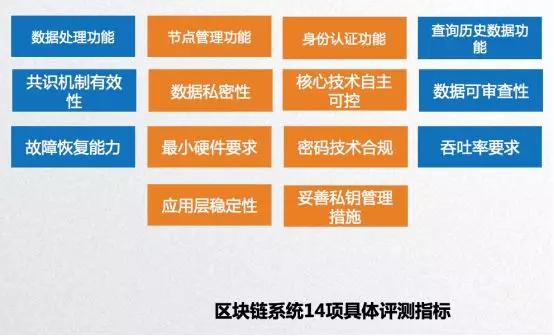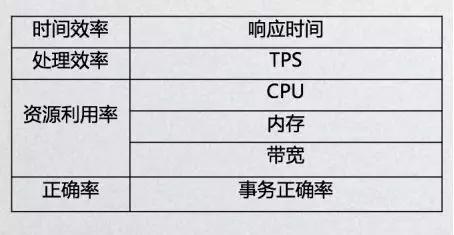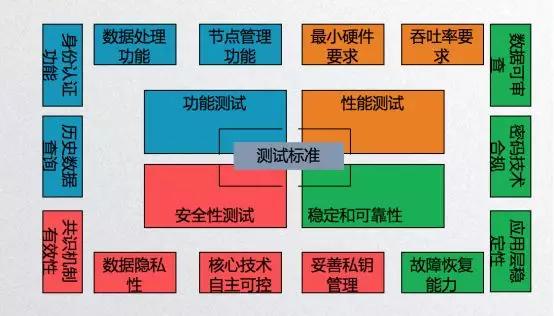Leihu, China Electronics Technology Standardization Institute: Building a blockchain test ecosystem based on standards
Industry development requires consensus, and all walks of life have standards of self- improvement . Building a sound industry standard system can standardize the healthy development of an industry, and the lack of standards will lead to disorderly development of the industry.
The rapid development of blockchain technology is also inseparable from the development of industry standards. As an emerging field, the current industry lacks reference and the consensus is difficult. It requires multiple organizations to jointly explore and try.

Image courtesy of unsplash
- The essence of high-end dialogue: How to understand the meaning of blockchain and bitcoin?
- Market Analysis: EOS starts cutting leeks, just waiting for BM's June big move
- 5 major events worth looking forward to in the second half of 2019
What progress is currently being made regarding the development of blockchain standards? How will the future develop?
On May 25th, Zinc Link held the fourth phase of “Zinc Huoyuan•Industry Blockchain Ecological Salon” in Beijing. The theme of this issue: “Standard Apocalypse – Blockchain Discourse Rights Competition and New Industrial Order” .
The founder of Zinc Link, Gong Haijun, and the Secretary-General of China Blockchain Evaluation Association and Vice President of Lanshi Technology, Li Yuhui, invited Li Ming, Director of the Blockchain Research Office of China Electronics Technology Standardization Research Institute, and Dr. Lei Hu and Jingdong, Standard Researcher of China Electronics Technology Standardization Institute. Zhang Keyi, head of innovation in the blockchain chain, and Li Bin, chief in charge of the innovation of the blockchain joint laboratory, Li Bin, chief researcher of Weizhong Bank Financial Technology, executive deputy secretary general of the Capital Copyright Industry Alliance, Xuan Hongquan, the founder of the global copyright public trust program, Discuss the block standard "standard". The following is the sharing of Thunder Tiger, there are cuts:

Domestic standardization
The domestic standard is based on the “Blockchain Reference Architecture” published in 2017, which specifies the user view, functional view, common concerns, key features, service capability types, deployment modes, etc. of the blockchain, and describes the blockchain. Industrial ecology helps the industry to reach consensus and guide the design, development and maintenance of blockchain systems.
In 2018, the group standard was issued and the application for the first national standard project in China was completed. At that time, a total of four group standards were issued, namely, "blockchain data format specification", "blockchain smart contract", "blockchain privacy protection", and "blockchain deposit application guide" . This year, the national standard project has started the development work.
Blockchain test necessity
As an emerging technology, the blockchain combines peer-to-peer communication, consensus mechanisms, cryptography and other technologies to achieve point-to-point trust and low-cost delivery of value. However, the current blockchain technology still has shortcomings, and testing work is especially critical for blockchain systems.
Generally, there are four conditions for determining whether a blockchain system is perfect: first, whether the function is complete; second, whether the performance is sufficiently good; third, whether it is safe and reliable; and fourth, whether it is legal and compliant.
At the same time, in terms of technology, 14 indicators are usually used to determine whether the blockchain system is perfect.

The blockchain test system refers to Masno's demand architecture. Under Maslow's demand structure, the basic needs are the basic needs of human beings (food, water), and the top layer is self-realization.
For blockchain systems, the most basic requirement for blockchain testing is functional testing. Why is functional testing the most basic? Because functional testing can be used to determine whether a system uses the basic functionality of blockchain technology, whether the application is based on the underlying development of the blockchain.
After the blockchain system implements the basic requirements (after functional testing is completed), performance testing can be used to achieve higher-level requirements, and performance testing is used to test whether the blockchain system performance is excellent.
The last is the highest requirement. We consider security and reliability to be the top-level requirements of the blockchain. When designing a test scenario, we plan to combine blockchain security testing with reliability testing.
According to the blockchain test content, it can be divided into four categories: functional test, performance test, security test, and reliability test.
1) Functional test
The main reference for the development of functional test test scenarios and test cases is the Blockchain Reference Architecture standard. The indicators in the standard are divided into testable and non-repetitive assessment items, design test items and sub-projects, and establish corresponding relationships with standards. At the same time, select the matching test method, specify the test environment, test progress, and combine the requirements of the laboratory quality management system to determine the termination conditions and the adoption criteria.
At present, 27 systems have received test certificates and CNAS-approved experimental reports.

2) Performance test
Performance testing can be easily understood as: Prove that the performance of the blockchain system can meet the needs of users.
Performance testing is divided into two aspects, one is the performance test of the underlying chain, and the other is the performance test of the application on the underlying chain. For the performance test of the underlying chain, we will use four categories, a total of six indicators to determine the basic performance of the blockchain.

Build a test ecosystem
In the process of building blockchain testing ecology, blockchain functional testing, performance testing, safety testing, stability and reliability testing should be carried out based on standards.

Text: Aubrey
Editor: Wang Qiao
© This article is copyrighted by "Zinc Link"
We will continue to update Blocking; if you have any questions or suggestions, please contact us!
Was this article helpful?
93 out of 132 found this helpful
Related articles
- Getting started with blockchain | What exactly is a smart contract?
- Nearly one-fifth of the central enterprise development blockchain – non-banking central enterprise blockchain practice
- Technical Guide | Plasma Core Certification Structure and Inspection
- Interview | Kevin Kelly: Blockchain is a great tool, but it doesn't necessarily change the world
- The joint petition deletes the signature of the copyright document, and who has become the eye of Ou Bencong
- 5.27 Market Analysis: Bitcoin accelerates the upside, how will the follow-up market develop?
- Will traditional financial institutions run into the market? The answer to these three questions is critical





